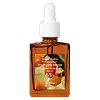What's inside
What's inside
 Key Ingredients
Key Ingredients

 Benefits
Benefits

 Ingredients Side-by-side
Ingredients Side-by-side

Water
Skin ConditioningGlycerin
HumectantPotassium Azeloyl Diglycinate
Skin ConditioningButylene Glycol
HumectantTranexamic Acid
AstringentAlpha-Arbutin
AntioxidantBiosaccharide Gum-1
HumectantSodium Polyacryloyldimethyl Taurate
Emulsion StabilisingPolyacrylate Crosspolymer-6
Emulsion StabilisingChlorphenesin
AntimicrobialPhenoxyethanol
PreservativeSodium Metabisulfite
AntioxidantSodium Diethylenetriamine Pentamethylene Phosphonate
Sodium Gluceptate
Trehalose
HumectantDisodium EDTA
Sodium Hyaluronate
HumectantWater, Glycerin, Potassium Azeloyl Diglycinate, Butylene Glycol, Tranexamic Acid, Alpha-Arbutin, Biosaccharide Gum-1, Sodium Polyacryloyldimethyl Taurate, Polyacrylate Crosspolymer-6, Chlorphenesin, Phenoxyethanol, Sodium Metabisulfite, Sodium Diethylenetriamine Pentamethylene Phosphonate, Sodium Gluceptate, Trehalose, Disodium EDTA, Sodium Hyaluronate
Hippophae Rhamnoides Water
MaskingCentella Asiatica Leaf Water
Skin ConditioningNiacinamide
SmoothingButylene Glycol
Humectant1,2-Hexanediol
Skin ConditioningDipropylene Glycol
HumectantWater
Skin ConditioningMethyl Gluceth-20
HumectantMethylpropanediol
SolventBetaine
HumectantTranexamic Acid
AstringentGlycerin
HumectantPentylene Glycol
Skin ConditioningPropanediol
SolventHydroxyethyl Urea
HumectantLaminaria Japonica Extract
Skin ProtectingEclipta Prostrata Leaf Extract
Skin ConditioningFicus Carica Fruit Extract
HumectantCentella Asiatica Extract
CleansingHydrogenated Lecithin
EmulsifyingSodium Hyaluronate
HumectantCarbomer
Emulsion Stabilising3-O-Ethyl Ascorbic Acid
Skin ConditioningC12-14 Pareth-12
EmulsifyingAmmonium Acryloyldimethyltaurate/Vp Copolymer
Xanthan Gum
EmulsifyingTromethamine
BufferingPanthenol
Skin ConditioningEthylhexylglycerin
Skin ConditioningAdenosine
Skin ConditioningDisodium EDTA
Fructooligosaccharides
HumectantBeta-Glucan
Skin ConditioningAscorbic Acid
AntioxidantHydrolyzed Hyaluronic Acid
HumectantCeramide NP
Skin ConditioningAlpha-Arbutin
AntioxidantTocopherol
AntioxidantBifida Ferment Lysate
Skin ConditioningBisabolol
MaskingUbiquinone
AntioxidantHydroxydecyl Ubiquinone
AntioxidantSodium Acetylated Hyaluronate
HumectantHippophae Rhamnoides Water, Centella Asiatica Leaf Water, Niacinamide, Butylene Glycol, 1,2-Hexanediol, Dipropylene Glycol, Water, Methyl Gluceth-20, Methylpropanediol, Betaine, Tranexamic Acid, Glycerin, Pentylene Glycol, Propanediol, Hydroxyethyl Urea, Laminaria Japonica Extract, Eclipta Prostrata Leaf Extract, Ficus Carica Fruit Extract, Centella Asiatica Extract, Hydrogenated Lecithin, Sodium Hyaluronate, Carbomer, 3-O-Ethyl Ascorbic Acid, C12-14 Pareth-12, Ammonium Acryloyldimethyltaurate/Vp Copolymer, Xanthan Gum, Tromethamine, Panthenol, Ethylhexylglycerin, Adenosine, Disodium EDTA, Fructooligosaccharides, Beta-Glucan, Ascorbic Acid, Hydrolyzed Hyaluronic Acid, Ceramide NP, Alpha-Arbutin, Tocopherol, Bifida Ferment Lysate, Bisabolol, Ubiquinone, Hydroxydecyl Ubiquinone, Sodium Acetylated Hyaluronate
 Reviews
Reviews

Ingredients Explained
These ingredients are found in both products.
Ingredients higher up in an ingredient list are typically present in a larger amount.
Alpha-Arbutin is made from hydroquinone and glucose. It may also be derived from the fermentation of soybeans.
This ingredient an antioxidant, meaning it helps protect your skin cells against damage.
Studies show this ingredient helps improve hyperpigmentation and fade discoloration.
Alpha-Arbutin may be used with other ingredients that help with hyperpigmentation. These ingredients include retinol, Vitamin C, niacinamide, and tranexamic acid.
Learn more about Alpha-ArbutinButylene Glycol (or BG) is used within cosmetic products for a few different reasons:
Overall, Butylene Glycol is a safe and well-rounded ingredient that works well with other ingredients.
Though this ingredient works well with most skin types, some people with sensitive skin may experience a reaction such as allergic rashes, closed comedones, or itchiness.
Learn more about Butylene GlycolDisodium EDTA plays a role in making products more stable by aiding other preservatives.
It is a chelating agent, meaning it neutralizes metal ions that may be found in a product.
Disodium EDTA is a salt of edetic acid and is found to be safe in cosmetic ingredients.
Learn more about Disodium EDTAGlycerin is already naturally found in your skin. It helps moisturize and protect your skin.
A study from 2016 found glycerin to be more effective as a humectant than AHAs and hyaluronic acid.
As a humectant, it helps the skin stay hydrated by pulling moisture to your skin. The low molecular weight of glycerin allows it to pull moisture into the deeper layers of your skin.
Hydrated skin improves your skin barrier; Your skin barrier helps protect against irritants and bacteria.
Glycerin has also been found to have antimicrobial and antiviral properties. Due to these properties, glycerin is often used in wound and burn treatments.
In cosmetics, glycerin is usually derived from plants such as soybean or palm. However, it can also be sourced from animals, such as tallow or animal fat.
This ingredient is organic, colorless, odorless, and non-toxic.
Glycerin is the name for this ingredient in American English. British English uses Glycerol/Glycerine.
Learn more about GlycerinSodium Hyaluronate is hyaluronic acid's salt form. It is commonly derived from the sodium salt of hyaluronic acid.
Like hyaluronic acid, it is great at holding water and acts as a humectant. This makes it a great skin hydrating ingredient.
Sodium Hyaluronate is naturally occurring in our bodies and is mostly found in eye fluid and joints.
These are some other common types of Hyaluronic Acid:
Learn more about Sodium HyaluronateTranexamic Acid is best used for treating hyperpigmentation, discoloration, and melasma. It can also help build a stronger skin barrier.
Once applied, Tranexamic Acid starts decreasing inflammation from UV exposure. Tranexamic Acid also prevents our skin cells from meeting the pigment production cells.
Its brightening property makes it great at reducing the appearance of acne scars and marks.
Fun fact: Tranexamic Acid is also a medication used to reduce heavy bleeding.
This acid is derived from lysine, an amino acid.
Learn more about Tranexamic AcidWater. It's the most common cosmetic ingredient of all. You'll usually see it at the top of ingredient lists, meaning that it makes up the largest part of the product.
So why is it so popular? Water most often acts as a solvent - this means that it helps dissolve other ingredients into the formulation.
You'll also recognize water as that liquid we all need to stay alive. If you see this, drink a glass of water. Stay hydrated!
Learn more about Water